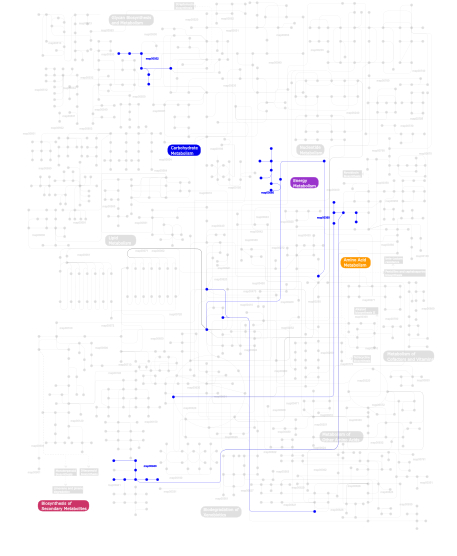The domain within your query sequence starts at position 276 and ends at position 308; the E-value for the LRRNT domain shown below is 4.55e-8.
HCPAACTCSNNIVDCRGKGLTEIPTNLPETITE
LRRNTLeucine rich repeat N-terminal domain |
|---|
| SMART accession number: | SM00013 |
|---|---|
| Description: | - |
| Interpro abstract (IPR000372): | Leucine-rich repeats (LRR) consist of 2-45 motifs of 20-30 amino acids in length that generally folds into an arc or horseshoe shape [ (PUBMED:14747988) ]. LRRs occur in proteins ranging from viruses to eukaryotes, and appear to provide a structural framework for the formation of protein-protein interactions [ (PUBMED:11751054) (PUBMED:1657640) ].Proteins containing LRRs include tyrosine kinase receptors, cell-adhesion molecules, virulence factors, and extracellular matrix-binding glycoproteins, and are involved in a variety of biological processes, including signal transduction, cell adhesion, DNA repair, recombination, transcription, RNA processing, disease resistance, apoptosis, and the immune response [ (PUBMED:2176636) (PUBMED:21606681) ]. Sequence analyses of LRR proteins suggested the existence of several different subfamilies of LRRs. The significance of this classification is that repeats from different subfamilies never occur simultaneously and have most probably evolved independently. It is, however, now clear that all major classes of LRR have curved horseshoe structures with a parallel beta sheet on the concave side and mostly helical elements on the convex side. At least six families of LRR proteins, characterised by different lengths and consensus sequences of the repeats, have been identified. Eleven-residue segments of the LRRs (LxxLxLxxN/CxL), corresponding to the beta-strand and adjacent loop regions, are conserved in LRR proteins, whereas the remaining parts of the repeats (herein termed variable) may be very different. Despite the differences, each of the variable parts contains two half-turns at both ends and a "linear" segment (as the chain follows a linear path overall), usually formed by a helix, in the middle. The concave face and the adjacent loops are the most common protein interaction surfaces on LRR proteins. 3D structure of some LRR proteins-ligand complexes show that the concave surface of LRR domain is ideal for interaction with alpha-helix, thus supporting earlier conclusions that the elongated and curved LRR structure provides an outstanding framework for achieving diverse protein-protein interactions [ (PUBMED:11751054) ]. Molecular modeling suggests that the conserved pattern LxxLxL, which is shorter than the previously proposed LxxLxLxxN/CxL is sufficient to impart the characteristic horseshoe curvature to proteins with 20- to 30-residue repeats [ (PUBMED:11967365) ]. LRRs are often flanked by cysteine-rich domains: an N-terminal LRR domain and a C-terminal LRR domain ( IPR000483 ). This entry represents the N-terminal LRR domain. |
| Family alignment: |
There are 42000 LRRNT domains in 37397 proteins in SMART's nrdb database.
Click on the following links for more information.
- Evolution (species in which this domain is found)
- Disease (disease genes where sequence variants are found in this domain)
- Metabolism (metabolic pathways involving proteins which contain this domain)
- Structure (3D structures containing this domain)
- Links (links to other resources describing this domain)




































































































